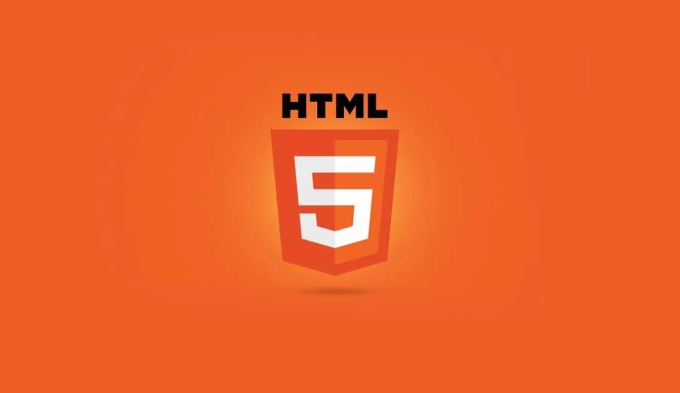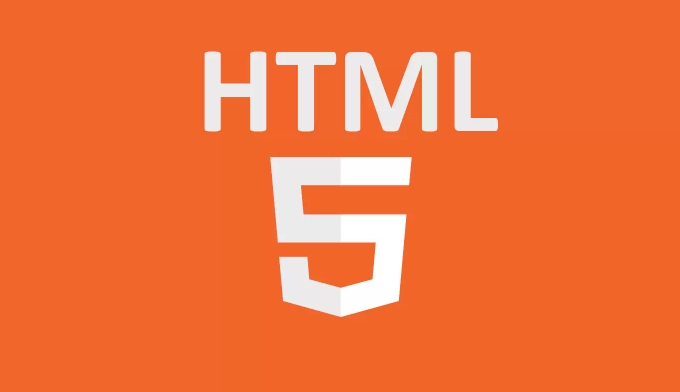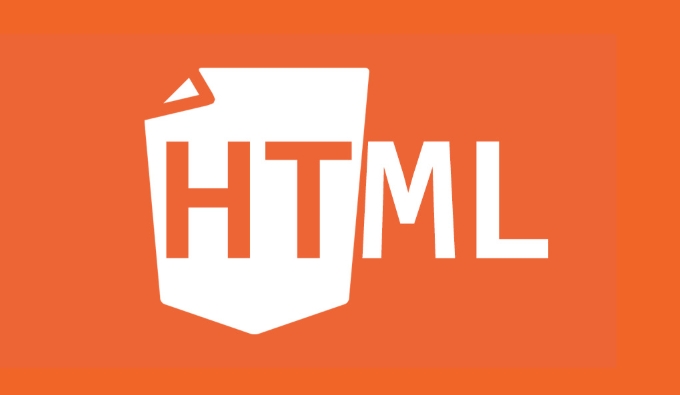The key to improving performance using Web Worker in H5 development lies in communication mode design, which mainly has three communication methods. 1. Basic: Use postMessage to achieve one-way communication. The main thread sends data through worker.postMessage, and the Worker receives it through onmessage, which is suitable for simple task processing; 2. Intermediate: Design a two-way communication and message routing mechanism, enhancing scalability by adding type fields to the message and executing different logic according to the type; 3. Advanced: Use Channel Messaging to establish an independent communication channel, and create ports through MessageChannel to achieve multi-task isolation, which is suitable for modular architecture. In addition, data can be shared between multiple workers through main thread mediation or SharedArrayBuffer, but the former is recommended to ensure clear structure. It should be noted that Worker cannot access the DOM, and there are structured cloning restrictions on data transmission, so high-frequency large amounts of communication should be reduced to optimize performance.

In H5 development, Web Worker is an important tool for improving performance and implementing multi-threaded processing. But to really use it well, the key lies in the design of the communication mode. Worker itself cannot operate the DOM, and all interactions must be completed through messaging. Therefore, mastering several practical communication modes can help you organize logic more efficiently and avoid blocking the main thread.

Basics: Use postMessage for one-way communication
The most basic and most commonly used communication method is postMessage . The main thread sends data to the Worker through worker.postMessage(data) , and the Worker internally listens to onmessage event to receive data. This approach is suitable for simple task triggering and result return.
for example:

// Main thread const worker = new Worker('worker.js');
worker.postMessage({ cmd: 'start', data: [1,2,3] });
worker.onmessage = function(e) {
console.log('Worker returns:', e.data);
}; // worker.js
onmessage = function(e) {
const result = e.data.data.map(x => x * 2);
postMessage(result);
}; This method is suitable for lightweight data processing tasks, such as computing, analysis, etc. Note that the data passed into postMessage will be cloned in structure, so it cannot contain functions or circular references.
Intermediate: Designing two-way communication and message routing mechanisms
When the application complexity increases, the simple "send-response" mode is not enough. You need to design a message routing system for Worker so that the main thread can distinguish different request types and support asynchronous callbacks.

A common practice is to add type field to the main message and perform different logic based on this field in Worker:
// The main thread sends different types of messages worker.postMessage({ type: 'calculate', payload: { a: 10, b: 20 } });
worker.postMessage({ type: 'fetchData', payload: { url: '/api/data' } }); // worker.js internal onmessage = function(e) {
switch(e.data.type) {
case 'calculate':
const sum = e.data.payload.a e.data.payload.b;
postMessage({ type: 'calculateResult', payload: sum });
break;
case 'fetchData':
fetch(e.data.payload.url)
.then(res => res.json())
.then(data => postMessage({ type: 'fetchDataResult', payload: data }));
break;
}
};This structure is clear and scalable, and is especially suitable for scenarios where multiple different types of tasks are required to be handled simultaneously.
Advanced: Use Channel Messaging to implement more complex communication topology
If you have multiple Workers in your project or need to control the communication path more fine-grained, you can consider using MessageChannel . It allows you to establish independent communication channels between the main thread and the Worker without interfering with each other.
For example, you can create a separate MessagePort for each asynchronous task to avoid messaging between multiple tasks:
// Main thread const channel = new MessageChannel();
channel.port1.onmessage = function(e) {
console.log('Received port1 message:', e.data);
};
const worker = new Worker('worker.js');
worker.postMessage({ type: 'taskA' }, [channel.port2]); // worker.js
onmessage = function(e) {
if (e.data.type === 'taskA') {
const port = e.ports[0];
port.postMessage('Task A processing is completed');
}
};This approach is particularly suitable for building a modular architecture, such as assigning different business logic to different Workers and communicating through ports to form a loosely coupled system.
Tips: Cross-Worker Communication and Shared Data Management
If you have multiple Workers and want them to communicate, you can mediate through the main thread, or use SharedArrayBuffer (be careful of browser compatibility and security policies) to achieve memory sharing.
However, in most cases, the main thread is recommended as the intermediate coordinator:
- Worker A sends a message to the main thread
- The main thread is forwarded to Worker B again
Although this is a layer, the structure is clear and easy to debug and maintain.
?? Notes:
- Global objects such as window and document cannot be accessed in Web Worker
- Data transfers are structured cloned, and deep objects may affect performance
- It is not recommended to frequently transmit large amounts of data, and communication frequency should be minimized.
In general, the communication mode of Web Worker in H5 can gradually evolve from simple to complex according to project requirements. The key is to choose the appropriate communication structure based on the task type, keeping the code clear and responsibilities clear. Basically all that is, the rest is to use it flexibly in combination with actual business.
The above is the detailed content of Advanced H5 Web Worker Communication Patterns. For more information, please follow other related articles on the PHP Chinese website!

Hot AI Tools

Undress AI Tool
Undress images for free

Undresser.AI Undress
AI-powered app for creating realistic nude photos

AI Clothes Remover
Online AI tool for removing clothes from photos.

Clothoff.io
AI clothes remover

Video Face Swap
Swap faces in any video effortlessly with our completely free AI face swap tool!

Hot Article

Hot Tools

Notepad++7.3.1
Easy-to-use and free code editor

SublimeText3 Chinese version
Chinese version, very easy to use

Zend Studio 13.0.1
Powerful PHP integrated development environment

Dreamweaver CS6
Visual web development tools

SublimeText3 Mac version
God-level code editing software (SublimeText3)

Hot Topics
 Adding drag and drop functionality using the HTML5 Drag and Drop API.
Jul 05, 2025 am 02:43 AM
Adding drag and drop functionality using the HTML5 Drag and Drop API.
Jul 05, 2025 am 02:43 AM
The way to add drag and drop functionality to a web page is to use HTML5's DragandDrop API, which is natively supported without additional libraries. The specific steps are as follows: 1. Set the element draggable="true" to enable drag; 2. Listen to dragstart, dragover, drop and dragend events; 3. Set data in dragstart, block default behavior in dragover, and handle logic in drop. In addition, element movement can be achieved through appendChild and file upload can be achieved through e.dataTransfer.files. Note: preventDefault must be called
 Handling reconnections and errors with HTML5 Server-Sent Events.
Jul 03, 2025 am 02:28 AM
Handling reconnections and errors with HTML5 Server-Sent Events.
Jul 03, 2025 am 02:28 AM
When using HTML5SSE, the methods to deal with reconnection and errors include: 1. Understand the default reconnection mechanism. EventSource retrys 3 seconds after the connection is interrupted by default. You can customize the interval through the retry field; 2. Listen to the error event to deal with connection failure or parsing errors, distinguish error types and execute corresponding logic, such as network problems relying on automatic reconnection, server errors manually delay reconnection, and authentication failure refresh token; 3. Actively control the reconnection logic, such as manually closing and rebuilding the connection, setting the maximum number of retry times, combining navigator.onLine to judge network status to optimize the retry strategy. These measures can improve application stability and user experience.
 Getting user location with HTML5 geolocation API
Jul 04, 2025 am 02:03 AM
Getting user location with HTML5 geolocation API
Jul 04, 2025 am 02:03 AM
To call GeolocationAPI, you need to use the navigator.geolocation.getCurrentPosition() method, and pay attention to permissions, environment and configuration. First check whether the browser supports API, and then call getCurrentPosition to obtain location information; the user needs to authorize access to the location; the deployment environment should be HTTPS; the accuracy or timeout can be improved through configuration items; the mobile behavior may be limited by device settings; the error type can be identified through error.code and given corresponding prompts in the failed callback to improve user experience and functional stability.
 Understanding the autoplay policy changes affecting HTML5 video.
Jul 03, 2025 am 02:34 AM
Understanding the autoplay policy changes affecting HTML5 video.
Jul 03, 2025 am 02:34 AM
The core reason why browsers restrict the automatic playback of HTML5 videos is to improve the user experience and prevent unauthorized sound playback and resource consumption. The main strategies include: 1. When there is no user interaction, audio automatic playback is prohibited by default; 2. Allow mute automatic playback; 3. Audio videos must be played after the user clicks. The methods to achieve compatibility include: setting muted properties, mute first and then play in JS, and waiting for user interaction before playing. Browsers such as Chrome and Safari perform slightly differently on this strategy, but the overall trend is consistent. Developers can optimize the experience by first mute playback and provide an unmute button, monitoring user clicks, and handling playback exceptions. These restrictions are particularly strict on mobile devices, with the aim of avoiding unexpected traffic consumption and multiple videos
 Using ARIA attributes with HTML5 semantic elements for accessibility
Jul 07, 2025 am 02:54 AM
Using ARIA attributes with HTML5 semantic elements for accessibility
Jul 07, 2025 am 02:54 AM
The reason why ARIA and HTML5 semantic tags are needed is that although HTML5 semantic elements have accessibility meanings, ARIA can supplement semantics and enhance auxiliary technology recognition capabilities. For example, when legacy browsers lack support, components without native tags (such as modal boxes), and state updates need to be dynamically updated, ARIA provides finer granular control. HTML5 elements such as nav, main, aside correspond to ARIArole by default, and do not need to be added manually unless the default behavior needs to be overridden. The situations where ARIA should be added include: 1. Supplement the missing status information, such as using aria-expanded to represent the button expansion/collapse status; 2. Add semantic roles to non-semantic tags, such as using div role to implement tabs and match them
 Securing HTML5 web applications against common vulnerabilities
Jul 05, 2025 am 02:48 AM
Securing HTML5 web applications against common vulnerabilities
Jul 05, 2025 am 02:48 AM
The security risks of HTML5 applications need to be paid attention to in front-end development, mainly including XSS attacks, interface security and third-party library risks. 1. Prevent XSS: Escape user input, use textContent, CSP header, input verification, avoid eval() and direct execution of JSON; 2. Protect interface: Use CSRFToken, SameSiteCookie policies, request frequency limits, and sensitive information to encrypt transmission; 3. Secure use of third-party libraries: periodic audit dependencies, use stable versions, reduce external resources, enable SRI verification, ensure that security lines have been built from the early stage of development.
 Integrating CSS and JavaScript effectively with HTML5 structure.
Jul 12, 2025 am 03:01 AM
Integrating CSS and JavaScript effectively with HTML5 structure.
Jul 12, 2025 am 03:01 AM
HTML5, CSS and JavaScript should be efficiently combined with semantic tags, reasonable loading order and decoupling design. 1. Use HTML5 semantic tags, such as improving structural clarity and maintainability, which is conducive to SEO and barrier-free access; 2. CSS should be placed in, use external files and split by module to avoid inline styles and delayed loading problems; 3. JavaScript is recommended to be introduced in front, and use defer or async to load asynchronously to avoid blocking rendering; 4. Reduce strong dependence between the three, drive behavior through data-* attributes and class name control status, and improve collaboration efficiency through unified naming specifications. These methods can effectively optimize page performance and collaborate with teams.
 Declaring the correct HTML5 doctype for modern pages.
Jul 03, 2025 am 02:35 AM
Declaring the correct HTML5 doctype for modern pages.
Jul 03, 2025 am 02:35 AM
Doctype is a statement that tells the browser which HTML standard to use to parse the page. Modern web pages only need to be written at the beginning of the HTML file. Its function is to ensure that the browser renders the page in standard mode rather than weird mode, and must be located on the first line, with no spaces or comments in front of it; there is only one correct way to write it, and it is not recommended to use old versions or other variants; other such as charset, viewport, etc. should be placed in part.






